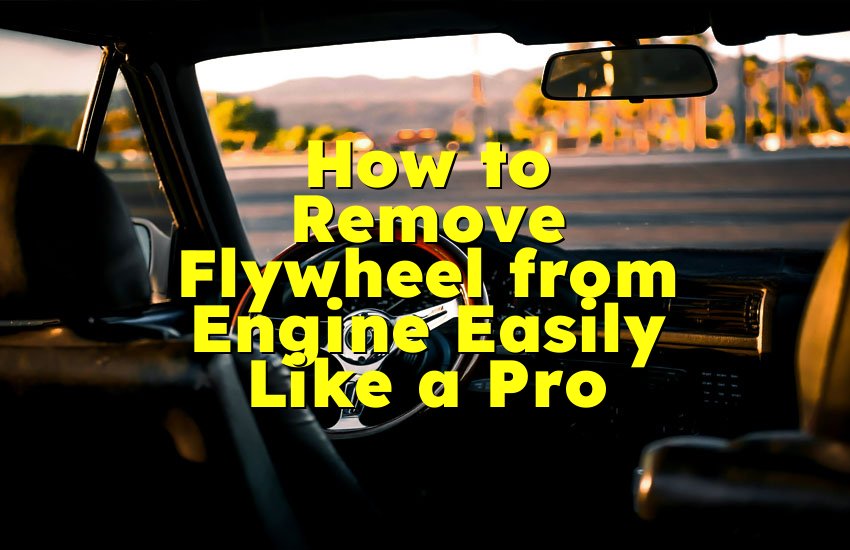As an Amazon Associate, I earn from qualifying purchases at no extra cost to you.
What Does Metal Shavings In Oil Mean? Expert Guide
You check your engine oil and notice tiny shiny bits in it. It feels scary, right? Those small metal shavings can mean your engine is having trouble. The oil is meant to keep your engine smooth and clean, so when metal bits show up, something is wrong. It might be from worn parts inside the engine. In this article, you will learn why metal shavings are there, what causes them, how to fix it, and how to stop it from happening again.
What Causes Metal Shavings To Appear In Oil
Metal shavings in oil usually mean something inside your engine is rubbing too much. Oil helps the engine run smooth by stopping metal parts from touching each other too hard. But when parts get old or damaged, they can grind together and break off tiny pieces of metal. These pieces end up floating in the oil.
This can happen for many reasons. Sometimes the engine oil is too dirty or too old. If you forget to change it for a long time, it loses its power to protect the engine. Dirty oil becomes thick and full of junk, and it can’t do its job anymore. When the engine runs with bad oil, parts get hot and wear out faster.
Other times, it could be a problem with engine parts like bearings, pistons, or the crankshaft. These parts move fast when the engine is on. If one of them gets loose or damaged, it may start grinding or scraping. This makes metal bits fall off into the oil.
If you just rebuilt or repaired your engine, it’s normal to see a few metal shavings at first. But if the shavings keep coming after some time, it’s not normal anymore. Something might be breaking down inside.
Also, using the wrong type of oil for your car can cause trouble. Each engine needs a certain oil thickness and quality. If the oil is too thin or not strong enough, the metal parts might not be protected well, which causes wear and leads to metal in the oil.
Here are some other common causes:
- Driving the car too hard
- Engine overheating often
- Low oil levels
- Poor oil filters not catching debris
- Not fixing small engine problems early
If you hear ticking, knocking, or grinding sounds from the engine, it could mean that the metal shavings have already caused damage. Your engine may not last much longer if you keep driving without fixing it.
- Old or dirty oil
- Engine parts wearing out or rubbing
- Wrong type of oil
- Overheating engine
- Driving too hard
- Poor oil filter
- Low oil level
- Noise from the engine
How To Check For Metal Shavings In Oil
Checking for metal shavings is not hard. You can do it at home if you have some tools and follow safety rules. First, make sure your engine is cool. Never check oil when the engine is hot.
Start by pulling out the dipstick. This is a long thin stick found in your engine that shows how much oil is inside. Wipe it clean with a paper towel. Then, put it back in fully and pull it out again. Look closely at the oil on the dipstick. If you see shiny specks or small flakes, those are likely metal shavings.
Next, do an oil change to look deeper. When the oil drains out, watch what comes out. Use a clean pan to catch the oil. Shine a light on it and look for glitter-like flakes. You can also pour the drained oil through a clean white cloth or paper filter. Metal shavings will stay on the cloth and be easy to see.
Some people use a magnet. Hold a small magnet near the oil or inside the drain pan. Metal shavings made from steel or iron will stick to it. This trick helps tell if the shavings are from important engine parts.
If you want to be 100% sure, send your used oil to a lab. This is called oil analysis. The lab can tell what type of metal is in your oil, like aluminum, copper, or iron. Each metal points to a different part of your engine. That way, you'll know exactly which part may be wearing out.
Also, take note of any symptoms. Is your engine making weird sounds? Is the oil light on? Are you losing power while driving? All these signs can go along with metal shavings and tell you more.
- Check dipstick for shiny bits
- Drain oil into a clean pan
- Use a magnet to catch metal pieces
- Look closely using a flashlight
- Send oil sample to a lab
- Watch for engine sounds or power loss
What Happens If You Ignore Metal Shavings In Oil
Ignoring metal shavings in oil can turn into a big problem. These tiny pieces may seem small, but they are very harmful to your engine. If you keep driving with them in the oil, they move through the engine and damage more parts.
Metal shavings act like tiny blades. They scrape and grind against moving parts inside your engine. Over time, this causes more parts to wear out faster. Your engine will lose power, make noise, and overheat. If it gets really bad, it can even stop working.
Many people think they can keep driving a little longer, but that is dangerous. It can turn a small repair into a very expensive one. For example, a bad bearing might be fixed for a few hundred dollars. But if you wait too long, you may need a full engine rebuild, which costs thousands.
Your oil filter might try to catch some of the metal shavings, but it’s not perfect. Some pieces are too small, and they still pass through. That's why oil changes and regular checks are important.
Also, metal in the oil can clog oil passages. When oil can’t flow right, some parts don't get enough oil. These dry parts heat up and break down quickly. That's when engine failure happens.
Not fixing the issue also lowers the value of your car. If you plan to sell it one day, buyers will notice the damage. It's better to act early and save your engine.
- More engine parts wear out
- Loss of power and overheating
- Engine failure can happen
- Fixing costs go up
- Oil flow gets blocked
- Low resale value of car
How To Fix Metal Shavings In Engine Oil
Fixing this problem depends on how bad the damage is. First, stop driving the car right away. Continuing to drive will only make it worse. Next, change the oil and the oil filter. This may remove the loose metal bits. Then, run the engine for a few minutes and check the oil again.
If you still see metal, the problem is inside. You will need a mechanic to inspect the engine. They might open the engine and check parts like the crankshaft, bearings, pistons, and camshaft. Any worn or broken part must be replaced.
Sometimes only one part is bad. In that case, the fix may not cost too much. But if many parts are damaged, you may need an engine rebuild or even a full replacement.
If your car is under warranty, contact the dealer. Some engine problems may be covered. If not, get a few quotes from different mechanics. This helps you find the best price for repair.
Also, ask your mechanic to check the oil pump. If the pump is weak or broken, it may not move oil properly. That can cause overheating and lead to metal shavings.
Once the engine is repaired, always use good quality oil. Follow your car’s manual for oil type and change time. You can also add a magnetic oil drain plug. This catches metal shavings before they go too far.
- Stop driving the car
- Do an oil and filter change
- Let mechanic check engine parts
- Replace any broken or worn parts
- Ask about engine rebuild if needed
- Check oil pump
- Use correct oil and follow schedule
- Use magnetic drain plug
How To Prevent Metal Shavings In Oil
The best way to prevent metal shavings is to take good care of your engine. Always use the right type of oil for your car. Check your car manual or ask your mechanic. Using cheap or wrong oil can cause damage over time.
Change your oil and filter on time. Don’t wait too long. Even if your car seems fine, old oil loses power to protect the engine. Set a reminder or keep a small notebook to track your oil changes.
Watch your car's temperature. If it gets too hot often, your engine might start to break down. Overheating is a big cause of engine wear.
Drive gently when your engine is cold. When you start your car in the morning, let it warm up for a minute or two. Cold oil is thick and doesn't flow well. Gentle driving gives the oil time to spread and protect the engine.
Also, fix small problems early. If you hear a ticking sound or see a warning light, don't ignore it. Fixing small issues early can stop bigger ones later.
Another good idea is to use engine oil with additives. Some oils have extra ingredients to help fight wear. You can also ask your mechanic if they suggest a special oil for your engine.
A regular inspection by a trusted mechanic helps too. They can spot early signs of trouble before they get worse.
- Use the correct oil
- Change oil and filter on time
- Avoid overheating
- Warm up engine before hard driving
- Fix small engine issues early
- Use oil with helpful additives
- Get engine checked regularly
When To Worry About Metal Shavings In Oil
Some people panic after seeing just a few shavings. But it's important to know when it's serious. After a fresh engine rebuild, a few shavings are normal. They come from new parts settling in. But if you see more shavings later, or if they keep coming after several oil changes, then you should worry.
You should also worry if your engine is making strange noises, like knocking, ticking, or grinding. These sounds mean the engine is already under stress. Combined with metal shavings, it’s a clear warning sign.
If your oil level is dropping fast or you see blue smoke from the exhaust, that's another sign. Metal in oil might be wearing out piston rings, causing oil to burn.
If your car feels weaker when driving, like slow takeoff or shaking, this could mean damaged parts inside the engine. Metal shavings are a sign that something serious may be going wrong.
So, keep calm but take action. It's not always a disaster if you catch it early. But if you see signs of engine failure, get it checked fast.
- Normal after rebuild, but not later
- Engine noise like knocking or ticking
- Oil level drops fast or blue smoke
- Weak engine performance
- Check early to avoid bigger damage
Final Thoughts
Finding metal shavings in your engine oil can feel scary, but it doesn’t always mean the end of your car. It could be from normal wear or something more serious. The key is to act fast. Check your oil often, listen to your engine, and fix small problems early. With the right care, you can stop big damage and keep your engine running strong. Always use the right oil and follow a good maintenance plan to avoid trouble before it starts.
Frequently Asked Questions (FAQs)
Is it normal to find small metal shavings in oil?
It can be normal if you just rebuilt or repaired your engine. In those cases, tiny shavings might show up during the first oil change. But after that, it should not continue. If you keep seeing them, it means parts inside the engine are wearing out or breaking. This is not normal and needs to be checked. Even small shavings over time can lead to big problems. Always watch for engine noises or warning lights too.
Can metal shavings in oil damage my engine?
Yes, metal shavings can damage your engine. They move with the oil and rub against other parts inside the engine. This causes more wear and may lead to failure of key engine parts like bearings, pistons, or crankshaft. If not removed, the shavings may also block oil passages. That stops oil from flowing, which overheats and damages your engine more. So it’s very important to fix the cause as soon as possible.
Do I need to replace my engine if I see metal shavings?
Not always. It depends on how much damage has been done. If you find the shavings early and there's no big harm yet, changing oil and fixing one or two parts might be enough. But if the engine has lost power, makes noise, or overheats, the damage may be serious. In those cases, you might need an engine rebuild or even a full replacement. A mechanic can check and give you the best advice.
Is it safe to drive with metal shavings in oil?
It's not safe. Even if your car still runs, driving with metal in the oil will make the damage worse. The shavings keep rubbing against engine parts, which wears them out more. Over time, the engine can fail while you are driving, which is dangerous. It's better to stop using the car and get it checked by a mechanic. The longer you wait, the more expensive the repair will be.
Can I fix metal shavings in oil by just changing the oil?
Changing the oil and filter can remove some metal shavings, but it doesn't fix the root problem. If parts inside your engine are damaged, they will keep making more shavings. So while an oil change is a good first step, it is not a complete fix. You need to find out what's causing the metal to appear in the first place. That usually means a mechanic has to inspect the engine.
Do I need a mechanic to check for metal shavings?
You can do a basic check yourself by using the dipstick or draining the oil. But a mechanic can do a much better inspection. They have tools to open and look inside the engine safely. They can also do oil analysis, which shows what kind of metal is in the oil. This tells you what part is wearing down. So, it's always a good idea to get a mechanic to check if you see metal in the oil.
Is it expensive to fix metal shavings in oil?
It depends on the cause. If it's just dirty oil or a bad filter, fixing it is cheap. But if engine parts are damaged, repair costs can be high. Replacing one bearing might cost a few hundred dollars. A full engine rebuild can cost thousands. That's why it's important to fix small problems early. Regular oil changes and check-ups can save you from big repair bills later.
Can regular oil changes stop metal shavings?
Yes, regular oil changes help stop metal shavings from building up. Fresh oil keeps engine parts moving smooth and cool. It also cleans out tiny debris before they become a big problem. Also, new filters catch more junk. But oil changes alone won't help if something inside the engine is already breaking. So keep up with oil changes and pay attention to any strange engine sounds or signs.











